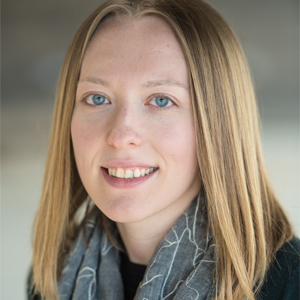Harnessing a natural plant insecticide for commercial use
Many plants produce molecules or peptides that help them combat destructive insects. These natural insecticides hold a lot of promise for improving how we can protect crops around the world from pests without harming the environment
Developing plant insecticides into eco-friendly products is one area of interest in David Craik’s laboratory, which is part of the Institute for Molecular Bioscience at the University of Queensland, Brisbane, Queensland, Australia.
Craik’s lab identified a group of cyclotides in a prior study and found that they have natural insecticidal properties. Cyclotides are unique; unlike typical peptides that form linear chains of amino acids, cyclotides link together end to end to form circular peptides. These cyclopeptides can interact with specific phospholipids that form cell membranes. This can happen within the insect’s gut and cause cell swelling or lysis that results in death or growth restriction of the insect. The Craik lab has become interested in studying the applications of these cyclotides, particularly as potential pesticides.
In their recent study, conducted in collaboration with Syngenta Crop Protection AG, an international agriculture technology company, and published in the Journal of Biological Chemistry, Craik’s lab focused on a specific cyclotide known as kalata B1. For an insecticide to have broad use, a business must be able to manufacture it efficiently and cost-effectively. It must also remain stable in a variety of environmental conditions where factors such as temperature and pH may differ considerably.
To address these issues, the Craik lab mutated specific amino acids within the cyclotide to determine their impact on the molecule's stability under varying conditions. This was achieved through a technique called a lysine scan, where each amino acid within the cyclotide was systematically replaced with lysine. The researchers then evaluated whether the change enhanced the stability of the cyclopeptide.
This work enabled the lab to create a more stable cyclopeptide capable of targeting insect cells from the fall armyworm, a major pest worldwide. They also confirmed that they could manufacture this cyclopeptide efficiently and safely.
“We can actually use a natural recombinant process to produce these proteins,” Craik said. “Some types of peptide synthesis can be quite an environmentally unfriendly process in terms of the amount of waste materials produced. But if you can produce peptides, and then cyclize them using enzymes rather than chemicals, you have a much greater production pathway.”
As of now, the only other cyclotide insecticide on the market is one known as Sero-x. Approved for use in Australia, it is applied to cotton plants and certain vegetable crops.
The next step for the Craik lab is to feed the cyclotide insecticide to fall armyworms and determine if it is effective in killing them. If these trials prove successful, another cyclotide insecticide may soon be available for use.
Enjoy reading ASBMB Today?
Become a member to receive the print edition four times a year and the digital edition monthly.
Learn moreGet the latest from ASBMB Today
Enter your email address, and we’ll send you a weekly email with recent articles, interviews and more.
Latest in Science
Science highlights or most popular articles

Bacteriophage protein could make queso fresco safer
Researchers characterized the structure and function of PlyP100, a bacteriophage protein that shows promise as a food-safe antimicrobial for preventing Listeria monocytogenes growth in fresh cheeses.

Building the blueprint to block HIV
Wesley Sundquist will present his work on the HIV capsid and revolutionary drug, Lenacapavir, at the ASBMB Annual Meeting, March 7–10, in Maryland.

Gut microbes hijack cancer pathway in high-fat diets
Researchers at the Feinstein Institutes for Medical Research found that a high-fat diet increases ammonia-producing bacteria in the gut microbiome of mice, which in turn disrupts TGF-β signaling and promotes colorectal cancer.

Mapping fentanyl’s cellular footprint
Using a new imaging method, researchers at State University of New York at Buffalo traced fentanyl’s effects inside brain immune cells, revealing how the drug alters lipid droplets, pointing to new paths for addiction diagnostics.

Designing life’s building blocks with AI
Tanja Kortemme, a professor at the University of California, San Francisco, will discuss her research using computational biology to engineer proteins at the 2026 ASBMB Annual Meeting.

Cholesterol as a novel biomarker for Fragile X syndrome
Researchers in Quebec identified lower levels of a brain cholesterol metabolite, 24-hydroxycholesterol, in patients with fragile X syndrome, a finding that could provide a simple blood-based biomarker for understanding and managing the condition.


